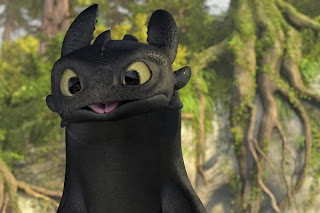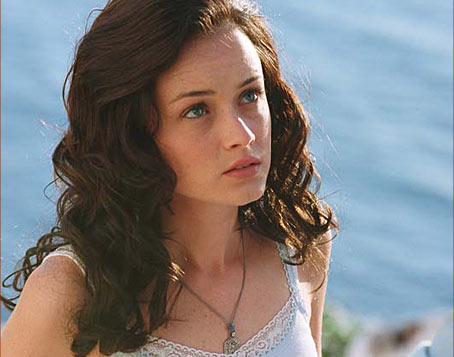Kiki’s Delivery Service
Studio Ghibli (Walt Disney Home Video)
Film released 1989 (Rereleased by Disney in
1998)
Director: Hayao Miyazaki
Writer: Hayao Miyazaki
Based on the book by Eiko Kadono
Starring: Kirsten Dunst, Debbie Reynolds,
Phil Hartman, Matthew Lawrence, and lots of Japanese voice actors (for the
Japanese version, obvi)
Rated: G
We’re going to JAPAN this week!
Miyazaki is HANDS DOWN one of the best
animated storytellers of our time. Period. While I love Spirited Away and fell back in love with him with Howl’s Moving Castle, Kiki will always hold a special place in
my heart as my childhood favourite.
 |
| I'll have what he's having |
Confession: Before last night, I hadn’t
watched this movie in eons. And boy was I missing out.
This movie is a feminist masterpiece. It’s one of those hidden gems, buried under years of watching male-driven animated features, but I am here to resurrect your worn VHS of yesteryear. Press stop, rewind, wait for an hour, annnnnnd let’s play!
This movie is a feminist masterpiece. It’s one of those hidden gems, buried under years of watching male-driven animated features, but I am here to resurrect your worn VHS of yesteryear. Press stop, rewind, wait for an hour, annnnnnd let’s play!
Quick recap for those who forgot the plot
(like me a mere 24 hours ago). For those of you who have yet to discover this
glorious piece of Japanese cinema GET ON THAT SHIT! If I could find it on the
internet, so can you.
We start by meeting Kiki, our thirteen
year-old female protagonist (how many
times do I get to say that? Too few, that’s how many) who is a witch, which is
a totally normal thing in this world! Here, witches leave home to train for a year
in a foreign city on their thirteenth birthday. So Kiki jets off on her mom’s
broom with her best sassy feline friend, Jiji. They find a pretty coastal city
(the animation was inspired by a bunch of European cities like
Stockholm, Lisbon, Paris, and Milan) where they are initially put off by big
city life. They eventually find a friendly pregnant woman, Osono, who let’s
them stay in her spare attic room in return for keeping an eye on the shop and then Kiki decides to start her own delivery service! She basically just flies around
on her broom like a one-woman postal service, making lots of friends along the
way. The film follows the trials and tribulations of a young witch just trying
to find her place in the world. And the animation is gorgeous, btw.
 |
| I am Kiki! Watch me flyyyyyy! |
Next, Kiki is a witch! I’ve already talked a bit about how entangled witches are in lesbian cultural symbols, history, the
whole she-bang (did you enjoy that pun as much as I did? Maybe not…moving on). Modern
example: Willow in Joss Whedon’s Buffy
the Vampire Slayer, historical example: all that horrible stuff that went
down in Salem, Mass way back when (and all the witch burning in Europe). Maybe I'll do a separate post on that...
Kiki’s world treats witches in a really interesting way. At first, we
are in a world of witches. Kiki’s a burgeoning witch, her mom is a witch who
whips up a damn good potion, and witch traditions are well-known facts.
Being a witch who does witchy things is totally normal. But then Kiki takes off and leaves home, she finds a place
where she is the only witch. Being a witch isn’t so normal anymore. She has to
adjust to her newfound isolation. What interests me is the witch cultural adage
here that this year of training (read: isolation) is a necessary part of
becoming a full-fledged witch. (How many times can I say witch in one post?) When I think of someone who must undergo a year
of training for whatever skill they are trying to cultivate, the narrative is
that they go off to train with someone,
usually an older and wiser mentor figure. But not in Kiki’s world. Her teacher
is her isolation. Her teacher is her queerness in an unfamiliar world. She must
learn to survive and thrive as the only one of her kind. And boy does she
struggle, but she comes out stronger for it. How fucking prolific is that?
I also think it’s really cool that she, a
THIRTEEN YEAR-OLD GIRL is allowed to leave home by herself for a full year.
Now, this is just totally unheard of in our modern world. Young people are
rarely given any kind of agency over their own lives, let alone a young girl. It’s
refreshing to see a young strong willed and totally independent young person
take control over her life and thrive.
She’s also an ENTREPRENEUR! She starts her
own delivery business and she makes money doing it! That’s a huge feat in
itself. And the fact that young girls can watch another young girl take the initiative and start her own relatively
profitable business is HUGE.
 |
| That'll be five cents please |
Now here comes the lesbian speculation (you
knew it was coming). Kiki meets a lot of interesting people on her deliveries.
Three people stood out to me.
There are the two older women who live in a fancy house. The house’s owner, only known as Madame, calls on Kiki’s services to deliver a herring pie (I guess that’s a thing?) to her niece for her birthday. Madame lives with her “friend” Barsa who runs around helping them make the pie and the reason for her presence is never discussed. I guess you’re supposed to think she’s a maid of some sort? All I know is that they are definitely big ‘ol homos. Dispute me, I dare ya. These two are lovely little old ladies living out their days together in their big fancy house away from judgmental prying eyes.
There are the two older women who live in a fancy house. The house’s owner, only known as Madame, calls on Kiki’s services to deliver a herring pie (I guess that’s a thing?) to her niece for her birthday. Madame lives with her “friend” Barsa who runs around helping them make the pie and the reason for her presence is never discussed. I guess you’re supposed to think she’s a maid of some sort? All I know is that they are definitely big ‘ol homos. Dispute me, I dare ya. These two are lovely little old ladies living out their days together in their big fancy house away from judgmental prying eyes.
 |
| This is my man-swatting broom |
And there’s Ursula, the kick-ass artist who
lives with the crows (yeah, she’s a bird lady) in the middle of the forest who
ends up becoming a close friend to Kiki and gives her important advice when she’s
down in the dumps and (spoilers!) loses her flying powers for a hot sec. Ursula
is the coolest. And rewatching the movie now, it is refreshing to see a
representation of a young queer twentysomething
being a friend to her young compatriot. Ursula lives alone in the wilderness
with no man in sight. She’s a free artistic spirit in touch with nature. And she’s
not afraid to talk about her struggles, both personal and artistic. She tells
Kiki about her art and her self-doubt and reveals her complexities as another
vulnerable and complicated woman. What a good role model.
 |
| Paint me like one of your french women |
You might have noticed I’ve barely talked
about the boys in the movie. The mere four
male representations include: a cat, Osono’s (the pregnant baker’s) muscley
husband who barely speaks and pretty much just makes bread the whole movie,
Kiki’s father who is a lovely human who is only in the first scene and the
epilogue, and Kiki’s “romantic” interest (they’re only thirteen so he’s more of
a friend interest), Tombo, whose advances she totally brushes off. Although his
relentless pursuit of Kiki is a little creepy, he actually ends up being a good
friend to her, he’s got these cute little glasses (I’ll always dole out some
extra points for my fellow glasses-wearers), and he’s the damsel in distress during the climactic moment of the movie! Kiki
pulls a superhero move and saves his life, literally catching him mid-air as he
falls to his death from a rogue blimp. Pause to appreciate the brilliant gender
role reversal. All hail Miyazaki, the secret feminist genius.
 |
| Kiki my love, Kiki my love, Kiki my loo-oooove |
Also, Jiji, the cat, is the sassiest BFF
ever.
 |
| Black cats are the masters of throwing shade |
Fun fact courtesy of IMDB: The film takes
place in an alternate reality version of the 1950s Europe where WWI and WWII
never happened! Talk about utopic!
MVQ: Osono, the pregnant baker, is the
story’s unsung hero, supporting Kiki and her business ventures, taking care of
her when she’s sick, and putting a roof over her head.
OTP: Ursula and the pretty lady down the
street who frequents the bakery. My theory is that they had a nasty breakup over
Ursula’s need to move to the forest to commune with nature and the pretty lady
didn’t want to sacrifice her career in fashion. Just a theory.
Favorite moment: Kiki’s superhero moment
saving Tombo. Epic. So epic.
 |
| It's a bird! It's a plane! It's a girl! |
















